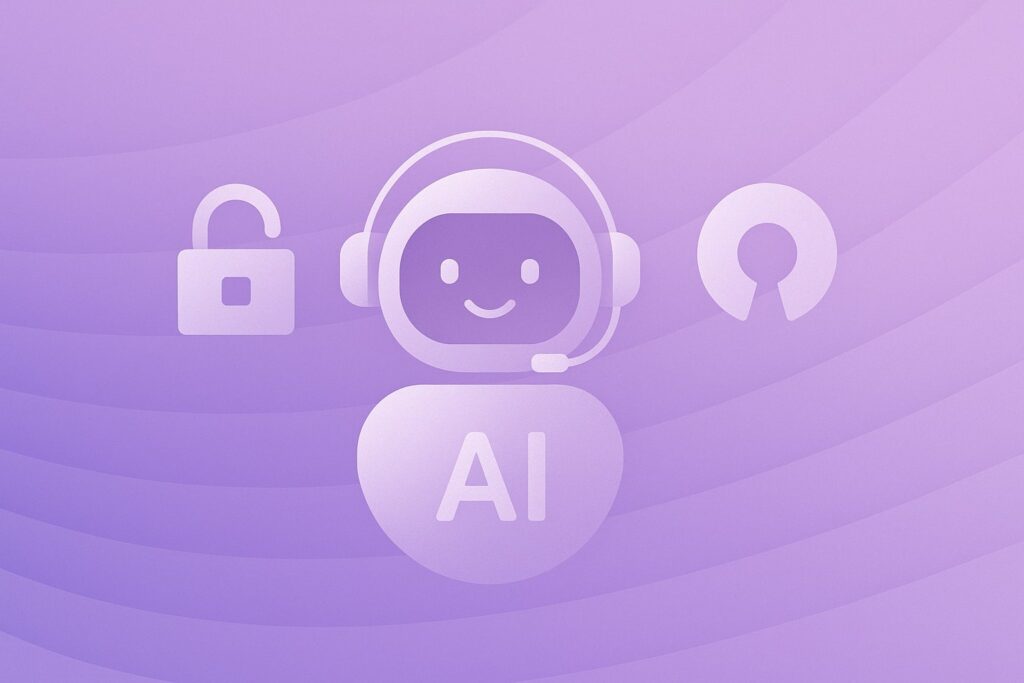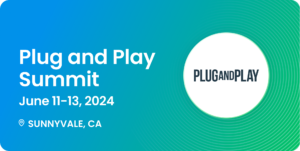Deploy them yourself to increase your output, make your portfolio look rad, and even contribute.
It’s time to start thinking about spicing up your portfolio with a little bit of AI. In today’s knowledge-work economy, productivity is taking a dive thanks to inefficient research and information-gathering.
In fact, employees spend an average of 1.8 hours every day just searching and gathering information.
That’s about 9.5 hours a week.
The agentic train keeps moving forward. But it’s not hard to get on board.
Plus, you’ll create your own arsenal of AI agents in the process. They’ll be at your beck and call to perform research. You’ll have a team of software engineers and a RAG engine to provide context from messy data to other agents.
Pretty cool, right?
The three agents we’re looking at in this article are:
All three are open source on GitHub, Apache 2.0, or MIT. And they’re all excellent examples to help you learn more about agentic AI and further boost your portfolio by contributing.
The bottom line is this: if someone else can learn it, you can, too. And you can give your career and productivity a boost at the same time.
Let’s dive in.
Key Takeaways
- Open-source AI agents dramatically accelerate your output, from automated research and auto-generated software repos to deep document understanding at scale.
- Each project, GPT Researcher, MetaGPT, and RAGFlow, gives you hands-on experience with real multi-agent systems. This helps your portfolio stand out with credible, practical AI engineering skills.
- Because all three are MIT or Apache-licensed, you can deploy, modify, and contribute freely. This makes them perfect for building public projects and demos. Plus, you’ll get contributions that hiring managers actually value.
Open-Source AI Agents: What They Are and Why You Should Care
Open-source AI agents are software systems that use large language models (LLMs) to autonomously plan, reason, and execute tasks. Instead of responding to a single prompt, agents break work into smaller steps.
They choose tools, gather data, and complete goals with minimal human intervention.
Think of them as AI “workers” that can research, write, code, or retrieve information on their own.
What makes open-source agents especially powerful is their transparency and flexibility.
Because the code is public, you can:
- Inspect how they work
- Customize their workflows
- Add new tools
- Build entirely new agent roles
They also benefit from active communities that rapidly iterate on features and ship improvements. Plus, they can publish research-backed designs.
For developers and technical creatives, experimenting with open-source agents is one of the fastest ways to build credible, portfolio-ready projects.
You may be automating research or generating full software repos. Or you might be extracting insights from messy datasets. In any case, agents help you demonstrate real-world AI engineering skills.
It’s not just prompt engineering.
Let’s look at the three types:
GPT Researcher
Normal humans can sometimes take weeks to research a simple question. And GPT Researcher aims to speed that time up in as little as minutes. It aims to be unbiased and is designed to avoid hallucinations. It is also built in a way to overcome the token limitations of current LLMs. This is to generate longer research reports.
How it Works
It does all this by utilizing different agents for planning and execution. The planner agent breaks the problem into questions to research, and the execution agents gather the relevant information. There is also a publisher agent that puts together the findings into a comprehensive report.
Origin Story
GPT Researcher was inspired by AutoGPT. The goal was to fix some of the headaches of the original. Combined with some knowledge found in research papers, GPT Researcher uses AI agents to break the tasks down into subtasks. Then, it can deterministically execute each subtask.
In other words, a list of tasks is created. Once the finite number of tasks has been checked off, the research has concluded. To fight bias, it seeks to gather large amounts of data on all sides of a topic. Essentially, it fights bias with balanced opinions.
Installation
It can be installed in four easy steps, found on the repo’s main read me page. Users can follow Python’s pip or use Docker (further down the page).
You can use OpenAI’s API or connect it to a private provider like AWS’s Bedrock.
It supports MCP (Model Context Protocol). This means creating an orchestration layer to control access, provide tools, and more.
It’s very straightforward.
Use Cases
Imagine being able to ask something like “What is Elon Musk doing to begin fabricating computer chips?” Then you get back a report with citations.
Here are just a few more examples of ways to research:
* Why is NVIDIA’s stock going up?
* What is the impact of quantum computing on cryptocurrency encryption?
* What is the scope and impact of Debian and Ubuntu changing core utilities to Rust?
* Would AI be better suited for low-level programming languages like C instead of high-level languages like Python?
Contributing
Looking to make some contributions to open source software? GPT Researcher is highly organized. It even has a Trello board of tasks they’re looking to solve. This moves from fine-tuning an LLM to CI/CD flows.
With almost 200 contributors, GPT Researcher is an outstanding project to give your portfolio an agentic boost. It’s about to earn its 25,000th star on GitHub, and development remains very active.
Latest Features
The latest feature is really neat. Deep Research, a recursive research workflow, employs a tree-like exploration pattern to dig deep into subtopics. And it won’t lose sight of the overall topic.
Bonus: it only costs 40 cents despite taking five whole minutes to perform its research.
MetaGPT
For many, GPT Researcher is your go-to for digging up facts. Well, MetaGPT is like assembling a virtual software engineering team to build stuff from scratch.
Billed as the “first AI software company,” this multi-agent framework takes a simple prompt and turns it into a full project repo. You’ll get:
- User stories
- Architecture designs
- Code
- Docs
It’s all about collaboration. Different LLM agents play roles like product manager, architect, project manager, and engineer. They follow structured SOPs (standard operating procedures) to tackle complex tasks.
MetaGPT draws inspiration from multi-agent systems research, like the STORM paper. It then aims to overcome LLM limitations like token constraints and outdated training data.
It also breaks work into orchestrated steps:
- Planning
- Execution
- Review
So you’ll get deterministic, high-quality outputs. No more endless tweaking of prompts. It’s like having a mini dev team that codes via natural language.
Latest Features
Recent updates include MGX (MetaGPT X), their natural language programming product, launched in February 2025. They’ve also had papers published like AFlow, which impressively got top honors at ICLR 2025.
See this schematic of their multi-agent setup.
Installation
Getting started is a breeze with Python 3.9+ (but under 3.12). Just pip install it, init the config with your LLM API keys (OpenAI, Azure, or others), and run a command like MetaGPT “Create a 2048 game.” It supports Docker too, and integrates with tools like LangGraph for even more advanced multi-agent flows.
For data tasks, try the Data Interpreter role to analyze datasets and generate plots. This is super handy for quick prototypes.
Use Cases
Imagine you send the prompt “Develop a personal finance tracker app.” You’ll get back a ready-to-run repo.
Here are some more ideas to spark your creativity:
* Build a CLI tool for tracking crypto prices.
* Create an AI-powered quiz generator for education.
* Prototype a simple e-commerce backend with user auth.
* Automate data pipelines for analyzing stock trends from APIs.
Contributing
Want to level up your open-source game? MetaGPT’s repo is buzzing with activity—over 40k stars and counting as of November 2025, with regular updates. They have a contributor form and Discord community where you can pitch ideas, like adding new agent roles (e.g., a QA tester) or integrating more LLMs.
With citations in academic papers and a focus on “Towards Natural Language Programming,” contributing here could make your portfolio scream “innovator.” It’s MIT-licensed, so fork away and showcase your tweaks.
RAGFlow
Rounding out our trio is RAGFlow. This is an open-source RAG (Retrieval-Augmented Generation) engine that supercharges LLMs by fusing them with agent capabilities.
Think of it as the ultimate context provider.
It dives into messy, unstructured data, like PDFs, images, spreadsheets, or web pages. It then extracts high-quality insights to feed into your AI workflows. This creates a “superior context layer” for LLMs. So you’ll reduce hallucinations and enable deep, accurate responses even on massive datasets.
Combining this context engine with the other two flows we’ve mentioned would make a solid portfolio project.
Inspired by cutting-edge RAG research, RAGFlow stands out with its deep document understanding. This handles complicated formats and unlimited tokens. It uses template-based chunking for smart, explainable data processing.
Plus, you get features like multi-modal analysis (e.g., making sense of images in docs) and agentic workflows for tasks like text-to-SQL or code execution. Recent additions include MinerU parsing (October 2025) and integration with Tavily. With Tavily, you’ll get internet-augmented “Deep Research”-style reasoning.
Installation
Fire it up with Docker Compose after checking prerequisites (it’s hungry, needing 16GB RAM and Docker 24+). Clone the repo, tweak the .env file with API keys, and run `docker compose up.` It supports CPU/GPU acceleration and switches easily between engines like Elasticsearch or Infinity.
APIs make it easy to integrate with your own apps, and they work with various LLMs/embeddings for customization.
Picture uploading a stack of research papers and querying “Summarize key findings on AI ethics.” You’ll get cited, grounded answers.
More use case inspirations:
* Build a knowledge base from company docs for quick Q&A.
* Analyze scanned contracts for legal risks with cross-language support.
* Convert natural language queries to SQL for database insights.
* Enhance chatbots with RAG from web sources to handle real-time news.
Contributing
RAGFlow is on fire with community growth. It was nearing 15k stars in November 2025, with active development and a detailed roadmap for 2025.
Join their Discord or fill out the contributor guidelines to tackle issues like improving agent integrations or adding data sources. Apache-licensed and enterprise-ready, contributions here highlight your skills in RAG and agents. This is perfect for portfolios targeting AI engineering roles.
Plus, with features like orchestrated ingestion pipelines, it’s a goldmine for real-world impact.
DuploCloud Pushes the Edge of Agentic AI Forward
In the end, open-source AI agents aren’t just experimental toys. They’re a practical way to level up your engineering skills, automate complex workflows, and build portfolio projects that show real technical depth.
You may be orchestrating multi-agent research or generating full software repos. Maybe you’re extracting insights from unstructured data.
In any case, these tools let you work smarter and ship faster.
Stay tuned. Next up, I’m going to detail testing out each of these AI agents.
At DuploCloud, we’re pushing the bleeding edge of agentic AI forward. We do this by simplifying deployment and letting developers focus on what they do best. And all the while, we’re building safeguards for AI agents to safely handle your prod apps in the cloud.
If you’re serious about taking agentic AI from side-projects to production, DuploCloud can help you do it safely and at scale.
Want real-world data on how teams are actually adopting AI in DevOps? DuploCloud’s AI + DevOps Report shares insights from engineering leaders on where AI agents deliver the most value… and where they still struggle.
Our platform abstracts the complexity of cloud infrastructure, compliance, and deployment so you can focus on building powerful agents.
No more babysitting your environment.
Ready to run agentic AI in production with confidence?
Explore how DuploCloud accelerates deployment and keeps your cloud secure.
Book your demo today.
FAQs
Do I need advanced AI or machine-learning knowledge to use these agents?
Not at all. Each project offers clear documentation, beginner-friendly setup steps, and active communities. Basic Python knowledge and an API key from your preferred LLM provider are usually plenty to get started.
Can I run these agents locally without sending data to external APIs?
Yep. All three support local or private LLM providers. These can include models running on your own GPU, local inference engines, or cloud-isolated environments like Bedrock. So you can maintain privacy and compliance.
Which of the three agents should I start with first?
If you’re looking for fast wins, start with GPT Researcher for research automation. If you’re interested in building applications automatically, choose MetaGPT. If your work involves documents, data, or knowledge bases, RAGFlow is your best starting point.
Are these tools production-ready or mainly for experimentation?
Well… they’re strong enough for advanced prototypes and internal automations. But production readiness depends on your stack. MetaGPT and RAGFlow are actively used in commercial settings. GPT Researcher is excellent for research, reporting, and agent workflow experimentation.



